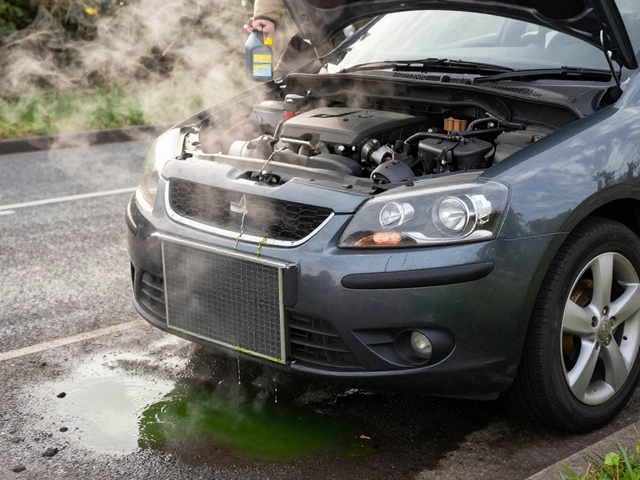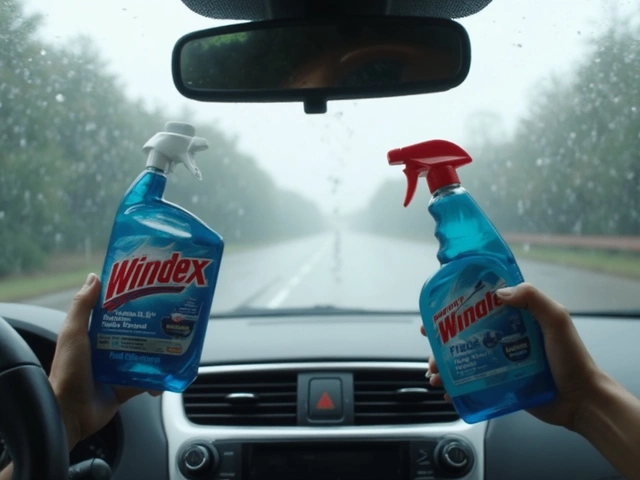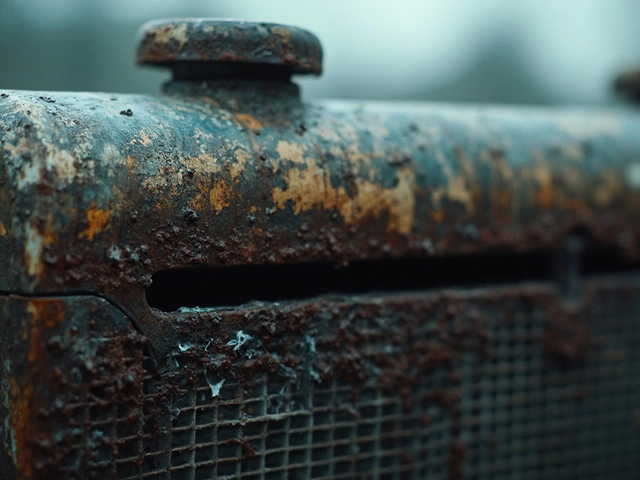Ever pop the hood and wonder if you can just toss in a bit of fresh oil when your dipstick's looking low? Tons of drivers think about this—especially when things get busy, or the nearest shop is miles away.
Here's the quick answer: Yup, adding new oil on top of old oil is usually fine if your engine's running low. It's way better than driving around with too little oil, which can wreck your engine fast. But it's not a get-out-of-jail-free card. Adding new oil doesn't magically clean out old grime or solve bigger problems hiding in your engine.
If your warning light's on, or your car sounds rough, don't ignore it. Sometimes, topping off buys you some time until a complete change, but it's not a substitute for regular oil changes. Real talk—old oil breaks down. It stops protecting your engine like it's supposed to. Mixing fresh oil with sludge just delays real maintenance.
- Why People Top Off Engine Oil
- What Happens When You Mix New and Old Oil
- When Is It Okay to Add Oil Without Changing It?
- Problems That Can Pop Up
- How to Properly Top Off Engine Oil
- When It's Time for a Full Oil Change
Why People Top Off Engine Oil
Topping off engine oil is something a lot of drivers do—sometimes out of need, sometimes just for peace of mind. Engines burn a little oil as they run, especially as they get older or if you push them hard. Weather also matters; super hot days or cold mornings can make your engine use more oil. And if you’ve got an older car with some miles on it, leaks and burning oil are just facts of life.
The real reason most people add oil is because they see a low reading on the dipstick. That drop can come from everyday use or small leaks you might not notice. You might not see a puddle where you park, but your engine is still losing oil drop by drop. If the oil light on your dashboard flashes, it’s a warning you shouldn’t ignore. Running your ride low on oil even once can do real damage, sometimes in just a few minutes.
Some folks top off when they hear more noise from the engine or if everything just sounds a little rougher than usual. Others, especially those driving older sedans, high-mileage trucks, or cars used for short trips, get used to adding a little here and there between oil changes. It’s not just about being lazy—it can make the difference between a smooth drive and a seized engine.
- Checking your oil level once a month is an easy call—takes less than five minutes.
- Not sure what oil to use when topping off? Your owner’s manual spells it out—wrong oil can cause even more problems.
Here's a quick look at how much oil some common engines burn under normal conditions:
| Car Type | Typical Oil Use (per 1,000 miles) |
|---|---|
| Modern Sedans (under 100K miles) | Negligible (less than 0.1 qt) |
| Older Trucks/SUVs (150K+ miles) | 0.5-1 qt |
| Performance Cars | 0.3-0.8 qt |
Topping off engine oil isn’t a sign of trouble by itself. But if you’re doing it often—like every few hundred miles—it’s time to check for leaks or engine wear, because oil shouldn’t just disappear.
What Happens When You Mix New and Old Oil
Mixing new oil with old oil happens all the time when folks top up their engine oil instead of changing it. But here’s what’s really going on inside your motor.
When you add fresh oil to the engine, both oils blend right away. The new stuff does help a bit—it brings back some lost thickness and can restore a little protection. But it doesn’t suddenly turn the whole batch into high-quality oil. The old oil has usually broken down: it’s thinned out, full of contaminants, and lost a chunk of its additives that fight wear, corrosion, and sludge.
Think of it like refilling a dirty fryer with clean oil. Sure, it buys you a little time, but the gunk from the old batch is still there, mixing with the fresh. Your car’s engine still has to cycle all that mess. The benefits of those expensive new oil additives are watered down because they’re now trapped with old, used-up oil.
Over time, this mix can’t keep things running smoothly. The old stuff can’t suspend dirt and metal particles as well, so those things start to stick around in your engine. Heat breaks down oil even faster, especially if you’re doing a lot of stop-and-go or towing heavy loads.
| Oil Condition | Protective Ability | Additives Remaining | Risk of Engine Wear |
|---|---|---|---|
| Fresh New Oil | High | 100% | Low |
| Old, Sludgy Oil | Low | 5-20% | High |
| Mixed Oil (New on Old) | Medium-Low | 30-60% | Moderate |
Car manuals and mechanics almost always say the same thing: topping up is a short-term fix, not a solution. If you keep mixing in fresh oil, the old junk builds up. Eventually, it causes sticky valves, clogged oil passages, or even engine failure. That’s the kind of repair that costs thousands—it makes skipping real oil changes a pretty lousy gamble.
When Is It Okay to Add Oil Without Changing It?
You don’t always need to drop everything and do a full oil change the second your oil level runs low. There are times when it’s totally fine to just add some oil and keep things moving. The important part is knowing when you’re safe to top off, and when you’re just putting off a bigger problem.
The main reason to add oil without a change is simply that your engine oil level is low, but the oil itself still looks decent. Maybe you notice the engine oil warning light on, or a quick check with the dipstick shows the oil level is below the minimum mark. Topping up helps keep your engine protected until your next scheduled oil change. A lot of cars need a top-off between official services—especially if they have more miles or if you do lots of long trips or heavy driving.
Here are specific times when just adding oil makes sense:
- Your oil looks clear or amber (not black or gritty) and your maintenance schedule is on track.
- You’re a couple hundred miles (or a week or two) away from your next oil change and the dipstick’s low.
- Your car’s burning a little more oil than usual—common in older engines.
- You notice the oil light come on during a road trip and need to get home or to a shop.
But don’t make it a habit to just keep adding new oil instead of changing it. Oil grabs up all kinds of crud from your engine as it travels around, and eventually, it just won’t do its job. Mixing good oil with worn-out oil only helps in a pinch—it doesn’t revive the old stuff.
Here’s a quick breakdown of what’s okay and what’s not when it comes to adding oil:
| Situation | Add Oil? | Needs Full Change Soon? |
|---|---|---|
| Oil is low, but clean/amber, maintenance on time | Yes | No |
| Oil is low, dirty/black, past due for change | Only if emergency | Yes |
| Road trip, warning light comes on | Yes | Get change ASAP |
| Between regular oil changes, dipstick barely low | Yes | No |
Long story short, topping off is good in emergencies or if you’re keeping up with proper maintenance and just need a little boost. Still, don’t skip oil changes—they’re there for a reason. If you’re adding oil more and more often, that might be a sign your engine needs a pro to check things out.

Problems That Can Pop Up
Piling new oil onto old oil sounds easy, but it doesn't make all maintenance headaches disappear. When you add fresh oil to grime-filled oil, you just end up diluting the mess instead of fixing it. The old, dirty oil is already packed with burned particles, sludge, and gunk from regular engine use. The fresh stuff helps a little, but it can’t turn back time or magically clean out those deposits.
Here’s a quick table to break down what can actually go wrong if you skip real oil changes too often and just keep topping off:
| Problem | What It Means For Your Engine |
|---|---|
| Oil Sludge Build-up | Thick sludge blocks oil flow, risking engine overheating and damage |
| Clogged Oil Passages | Fresh oil can’t reach all engine parts, leading to faster wear |
| Poor Lubrication | Grinding metal parts, more friction, quicker breakdowns |
| Overheating | Dirty oil loses its cooling power, engine gets too hot |
| Warranty Issues | Some car warranties become void if you skip regular engine oil changes |
On top of that, modern engines are designed with super-tight tolerances. If oil doesn’t flow cleanly and smoothly, even one part getting gummed up can mean a huge repair bill. Car repair shops see this way more than you’d think—especially after drivers have been topping up without changing oil for months.
Another thing: sensors can get confused. Topping off might reset an oil light, but if the oil is past its prime, you could get sudden warning lights, strange noises, or even a check engine alert. That’s when you know things are really going sideways.
So yeah, topping off works as a short-term fix, but lean too hard on it, and you’re rolling the dice with your engine’s life. Think of it as putting a band-aid on something that needs a real fix—sooner or later, the big problems will come knocking.
How to Properly Top Off Engine Oil
Before you dive in, grab the right kind of oil for your car. Check your owner’s manual—using stuff that doesn’t match what the engine needs is asking for trouble. Most cars need either 5W-30 or 10W-30, but double-check to be sure.
Here’s a play-by-play for topping up your oil the right way:
- Let your engine cool down. Hot engines and oil do not mix well for this job. Wait at least 5 minutes after turning off the ignition if you’ve been driving.
- Pop the hood and pull out the dipstick. Wipe it clean with a rag. Stick it back in and pull it out again to check the actual oil level.
- Spot if you’re low: Most dipsticks have two marks—‘min’ and ‘max.’ If you’re closer to ‘min,’ you need to add oil.
- Unscrew the oil cap (usually labeled 'engine oil') and stick a funnel in to avoid splashing everywhere.
- Pour a small amount of oil—never the whole bottle at once. Most engines only need half a quart to go from ‘min’ to ‘max.’
- Wait a minute, then check the dipstick again. Repeat as needed until you’re just under ‘max.’ Don't overfill; too much oil can mess things up too.
- Wipe up spills, screw the cap back on tight, and close the hood. Done!
According to the Car Care Council, “Checking your engine oil is a five-minute job that can prevent major repairs down the road.”
“Even low oil levels can accelerate wear and boost the risk of engine failure, especially in hot weather or stop-and-go traffic.” — Car Care Council
Here’s a quick look at how much oil some popular vehicles need to hit the mark from ‘min’ to ‘max’ on the dipstick:
| Vehicle | Oil Needed (Quarts) |
|---|---|
| Honda Civic (2018) | 0.5 |
| Toyota Camry (2022) | 0.6 |
| Ford F-150 (2019, V6) | 0.7 |
It bears repeating: keeping your engine oil in the safe range is way better than running low and risking a wallet-busting repair.
If you notice dark or gritty old oil, it’s time for a change, not just a top-off. Still, knowing how to top up is a must for any driver, whether you’re running errands or prepping for a cross-country trip with the family.
When It's Time for a Full Oil Change
So, when do you stop just topping up and finally give your engine a full oil change? Too many folks think they can just keep adding a splash here and there, but the truth is, nothing beats swapping out all that old oil for fresh stuff. Here’s how you know it’s time to swap, not top.
- Engine oil looks dark or feels gritty on the dipstick. Clean oil is usually light amber. If it looks black or has little chunks, it's definitely time.
- Your dashboard has an oil change reminder or the "check engine" light pops on. Most cars these days have a system to keep you honest.
- You’ve hit the mileage or months your manual suggests. It’s usually every 3,000 to 5,000 miles for old cars, or 6,000 to 10,000 for modern engines with synthetic blends.
- The engine sounds noisier than usual. Old oil doesn’t cushion moving parts as well, so you might hear ticking or knocking.
- You notice low fuel economy. Bad oil makes your engine work harder, which hits you at the pump.
Quick fact: Skipping a full oil change can reduce engine life by up to 30%. Junked engines often show thick sludge from neglected oil changes. The oil filter also gets clogged and can’t do its job anymore.
| Car Type | Traditional Oil Change Interval | Synthetic Oil Change Interval |
|---|---|---|
| Older (Pre-2000) | Every 3,000 miles or 3 months | Every 5,000 miles or 6 months |
| Modern (2000+) | Every 5,000 miles or 6 months | Every 7,500-10,000 miles or 12 months |
If you mostly do short drives or get stuck in city stop-and-go, your oil wears out faster. Same if you haul heavy loads or drive in really hot or cold weather. I usually set a calendar reminder, so even if life gets hectic (my kid Gideon calls it 'Dad’s oil alert'), I don’t forget.
Bottom line: topping off is just holding you over. A full oil change gets rid of all the debris, keeps your engine cool, and saves you expensive repairs later. It’s the cheapest insurance you can buy for your car.






